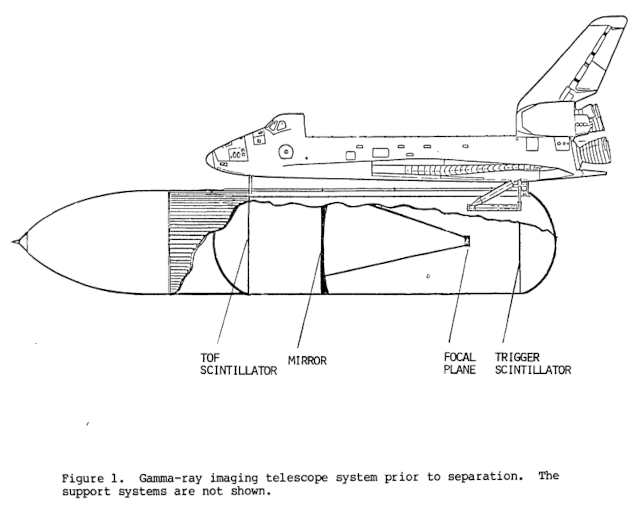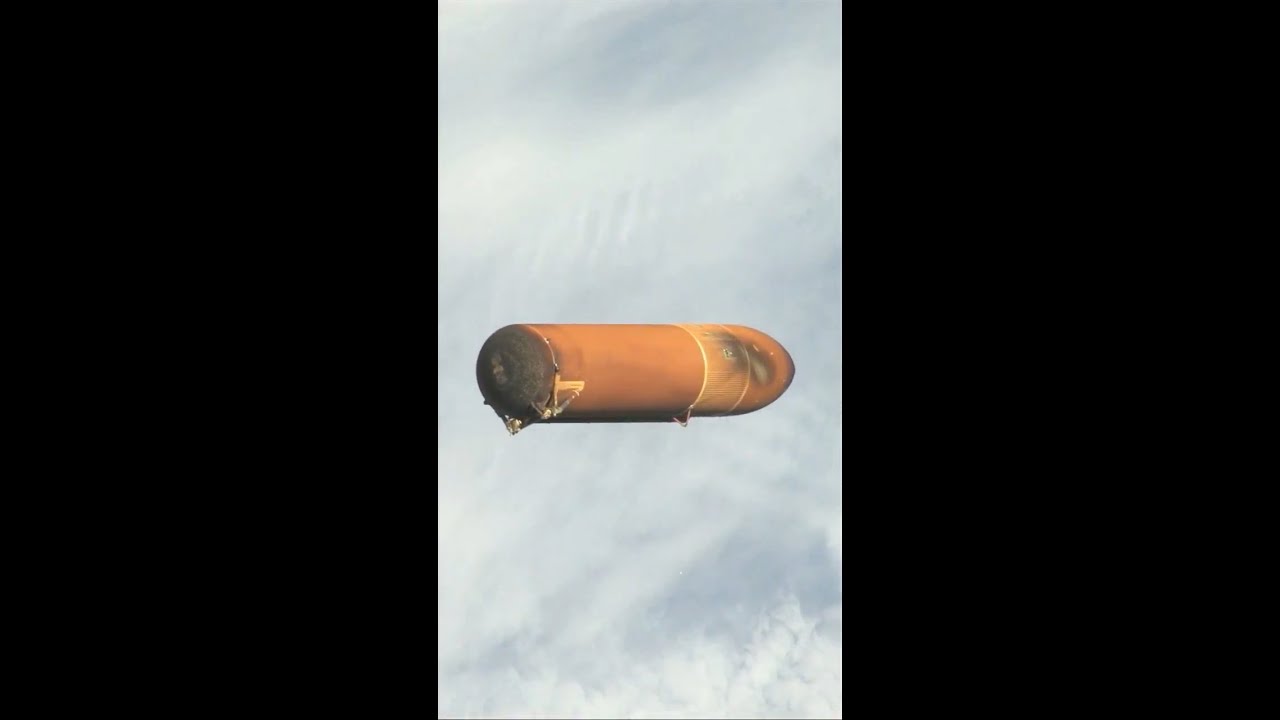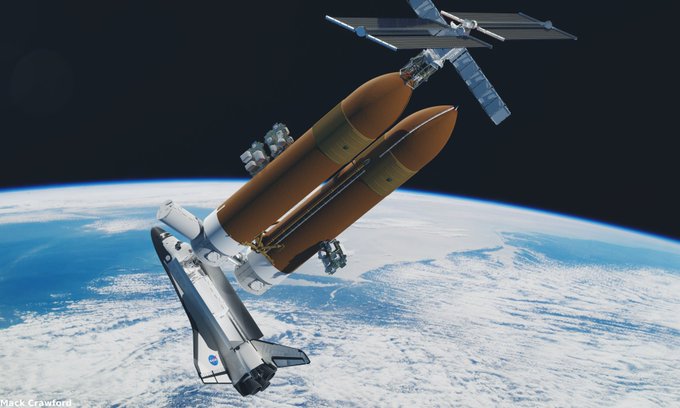What would your sales pitch be to Elon Musk?
Probably about the same as the one I wrote in 1987 for External Tanks Corporation (ETCO). In addition to the Autodesk investment, I made a personal investment in the company. After the post Challenger accident safety mania had fully gripped NASA, it became clear that even the de-de-de-descoped proposal to fly microgravity and space environment payloads in a rack on the inside of the intertank access door, using the tank as a giant sounding rocket that would downlink experiment results to a ground station in Africa before its destructive reentry over the Indian Ocean, was never going to be approved. I sold my shares in ETCO back to the founder for US$ 1 in 1994 to book the capital loss.
Let’s compare the usable internal volume of a Space Shuttle external tank (ET) and a SpaceX Starship injected into orbit with the goal of converting it into the core of a space station, as proposed by External Tanks Corporation (ETCO).
The ET contained two propellant tanks: a liquid hydrogen tank with a volume of 1497 m³ and a liquid oxygen tank with a volume of 551 m³, for a total volume of 2048 m³. Let’s round that down to 2000 m³ to account for space wasted due to curvature at the ends of the tanks, downcomers carrying propellant, and other overhead.
Starship is, at the moment, under development and less precisely specified. Its payload bay is given as 1000 m³, but if we’re looking at converting the whole ship into a station as in the original Skylab “wet workshop” for the S-IVB or ETCO Labitat proposals, we need to do some maths and arm waving. Starship has a diameter of 9 metres and a height of 50 metres (we’ll ignore the possibility of stretched versions which have been discussed). As a pure cylinder, this would have a volume of 3181 m³. Taking off losses due to intertank volume, downcomers, anti-slosh bulkheads, engine bay, and separation between the propellant tanks and payload bay, let’s call it 3000 m³. This is 50% more space to turn into the core of a habitation in Earth orbit (or orbital battle station—it’s up to you to choose, Elon) than the ET provided, and it isn’t covered with that messy spray-on foam insulation (SOFI) applied to the ET and prone to flaking off from long-term exposure to space and littering its orbit with lethal space debris. (This was the ultimate show-stopper for ETCO’s plans, although none of us involved thought of it at the time. In our defence, we did twig to the lethality of impacts with foam from the ET more than a decade before the Columbia accident, but we were thinking of orbital velocities, not during ascent.)
So, on reflexion, I think Elon would say, “Thanks, but no thanks”. You could build a fine space station starter from a single Starship, stripped of everything needed to re-enter and land, with the payload bay packed with solar arrays to install in orbit and the first installment of gear to refit the propellant tanks to become habitable space.
One of the near-term goals envisioned by External Tanks Corporation was using external tanks carried to orbit by the Shuttle the basis for a Gamma-Ray Imaging Telescope (GRIT) as described in the 1983 paper by David G. Koch, “A large-area gamma-ray imaging telescope system” (full text [PDF]). Here is the abstract:
The concept definition of using the External Tank (ET) of the Space Shuttle as the basis for constructing a large area gamma ray imaging telescope in space is detailed. The telescope will be used to locate and study cosmic sources of gamma rays of energy greater than 100 MeV. Both the telescope properties and the means whereby an ET is used for this purpose are described. A parallel is drawn between those systems that would be common to both a Space Station and this ET application. In addition, those systems necessary for support of the telescope can form the basis for using the ET as part of the Space Station. The major conclusions of this concept definition are that the ET is ideal for making into a gamma ray telescope, and that this telescope will provide a substantial increase in collecting area.

GRIT made a subtle cameo appearance in my 1989 science fiction story “We’ll Return, After This Message” in the passage “He planned to search all kinds of astronomical data, from the earliest radiotelescope sweeps to the downlink from the gamma ray imaging telescope in that converted shuttle tank with an algorithm…”.
This should work just as well or better with Starship, and be easier to implement since crew and cargo can be carried in the ship’s pressurised payload section rather than having to spacewalk from a separate vehicle to assemble the telescope in the empty propellant tanks.
The first thing I thought of was converting it to an x-ray telescope. Since I am rather ignorant of the optics (other than grazing is required), I asked a more general question. I’m glad I did although when I just went looking for gamma-ray telescope optics the descriptions weren’t as intuitively clear, at least to me, except it is clear that they don’t use grazing incidence to focus. Indeed they look more like regular telescopes other than the scintillators.
In any event, Musk isn’t likey to spend much time trying to sell a telescope based on a one-off retrofit.
The telescope design for GRIT used conventional optics to observe the Cherenkov radiation emitted by electron-positron pairs produced when incident gamma rays interact with the “converter”, a sheet of lead. The electron-positron pairs produce Cherenkov radiation when passing through the gas-filled volume of the telescope, and the spacing of the rings of light from the Cherenkov cones allows measuring the energy of the pair (which will be essentially the same as the incident gamma ray). Three scintillators allow vetoing events caused by charged particles, those which do not produce pairs, and chance coincident events. This is described on pages 10–14 of the PDF document linked in the original comment.
The hydrogen tank of the ET was ideal for the telescope, as it provided a large volume which was gas-tight for the Cherenkov detection. As the paper says, “A large thin-walled, gas-tight, light-tight pressure vessel is essential for the technique to work. If the ET didn’t exist, one would have to be designed in order to construct the telescope.”

